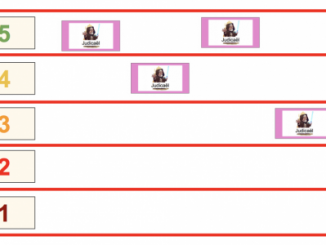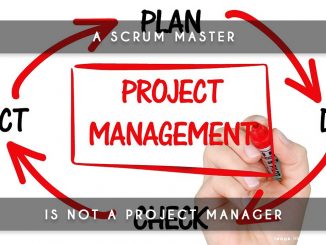
When the goal, scope and product domain is not understood by the Scrum Team, the Scrum Master should:
Options
a. Direct the Development team to stop working until the product owner improves the acceptance criteria.
b. Cancel the Sprint and schedule new planning meeting.
c. Nothing because it is the responsibility of the Product Owner
d. Facilitate a discussion between the Stakeholder, Product Owner and the Development Team.
Answer:
Facilitate a discussion between the Stakeholder, Product Owner and the Development Team.
To complete the answer:
When the goal, scope, and product domain are not understood by the Scrum Team, the Scrum Master should take several actions to address this situation:
- Facilitate Communication: The Scrum Master should act as a facilitator and ensure that there is open and transparent communication within the Scrum Team. This includes organizing discussions and meetings to clarify any misunderstandings or uncertainties.
- Educate and Train: The Scrum Master can provide training or educational resources to the team to improve their understanding of the goal, scope, and product domain. This may involve bringing in experts or conducting workshops.
- Coach and Mentor: The Scrum Master can coach and mentor team members, helping them gain a deeper understanding of the project’s goals and the product domain. This includes one-on-one coaching sessions if needed.
- Collaborate with Product Owner: The Scrum Master should work closely with the Product Owner to ensure that the product vision and goals are clear. They can assist the Product Owner in refining the Product Backlog and maintaining a well-prioritized list of items.
- Remove Obstacles: If there are obstacles or impediments preventing the team from understanding the goal, scope, or product domain, the Scrum Master should work to remove these obstacles. This may involve engaging with stakeholders, facilitating discussions, or seeking outside help.
- Regular Inspect and Adapt: The Scrum Master should encourage the Scrum Team to regularly inspect and adapt. This means that the team should continually assess their understanding and take corrective actions as needed.
- Use Agile Frameworks and Tools: The Scrum Master can introduce agile frameworks and tools that help improve communication, such as story mapping or user story workshops.
- Promote a Learning Culture: The Scrum Master should foster a culture of continuous learning within the team, where team members are encouraged to ask questions, seek clarification, and share knowledge.
- Seek External Expertise: If necessary, the Scrum Master can help the team seek external expertise or consult with subject matter experts who can provide insights into the product domain.
Overall, the Scrum Master plays a crucial role in ensuring that the Scrum Team has a clear understanding of the project’s goals, scope, and product domain. They should use their coaching and facilitation skills to address any gaps in understanding and work collaboratively to resolve these issues.




Be the first to comment